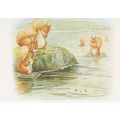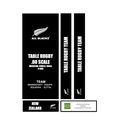Weybridge, Surrey - The Fountain - postcard 'AS Series' 1909 pmk
- Condition : Used
- Dispatch : 2 Days
- Brand : None
- ID# : 190585685
- Quantity : 1 item
- Views : 234
- Location : United Kingdom

- Seller : justthebook (+1704)
- Barcode : None
- Start : Fri 03 Apr 2020 12:33:54 (BST)
- Close : Run Until Sold
- Remain : Run Until Sold
More Listings from This Seller view all
Seller's Description
- Postcard
- Picture / Image: The Fountain, Weybridge [Surrey]
- Publisher: 'AS Series' No. 293
- Postally used: yes
- Stamp: Edward VII half d light green
- Postmark(s): Weybridge Aug 11 1909 cds
- Sent to: Mrs J. Read, 2 Feltham Cottages, Albert Road, Englefield Green, Egham, Surrey
- Notes / condition:
Please ask if you need any other information and I will do the best I can to answer.
------------------------------------------------
Postage and packing charge should be showing for your location (contact if not sure).
UK - PayPal, Cheque (from UK bank) or postal order
I will give a full refund if you are not fully satisfied with the postcard.
----------------------------------------------
Weybridge /ˈweɪbrɪdʒ/ is a town by the River Wey in the Elmbridge district of Surrey. It is bounded to the north by the River Thames at the mouth of the Wey, from which it gets its name. It is an outlying suburban town within the Greater London Urban Area, situated 7 miles (11 km) northeast of Woking and 16 miles (25 km) southwest of central London. Real estate prices are well above the national average: as of 2008, six of the ten most expensive streets in South East England (defined as the official government region, which excludes Greater London) were in Weybridge.[2][citation needed]
Weybridge, based on its parish bounds, forms three wards of the United Kingdom or can be divided into the Thames Street and town centre area, the Queens Road area on top of Monument Hill, most of Brooklands and St George's Hill. Within the post town, rather than Weybridge's other boundaries is Oatlands or Oatlands Village.
Weybridge lay within the Elmbridge hundred.
Weybridge appears in Domesday Book of 1086 as Webrige and Webruge held partly by Chertsey Abbey; partly by an Englishman from the abbey; and partly by Herfrid from the conqueror's brother, the Bishop of Bayeux. Its domesday assets were: 6 hides; 1½ ploughs, 32 acres (130,000 m2) of meadow, wood worth 9 hogs. It rendered £4 per year to it feudal system overlords.[3] It was much smaller than today's post town, and about one quarter of the size of neighbouring Walton.[4]
In 1235 Henry III granted to William son of Daniel Pincerna, for his homage and service, two mills on the River Wey, one above the 'bridge of Wey,' and the other at Feyreford (a place which no longer exists) at an annual rent of five silver marks.[5]
Until the late 18th century Weybridge was as a very small village with a river crossing, seed milling to make flour and nurseries would continue to provide the major source of home-grown income until the 20th century[5] but no tanneries, major coaching houses, shops, markets, forges or gunpowder works are documented for example in the medieval period. The earliest monuments on the tower wall of St James's C of E Church are 15th century plaques, and the Church was rebuilt in 1848 with a south aisle added in 1864.[6] In 1537 the south-west of Walton on Thames extra-territorially a manor house affiliated to Weybridge on what was a border of Weybridge and Walton, Oatlands Palace, was built by Henry VIII, which was where he married his fifth wife Catherine Howard. When it was demolished in 1650, bricks from its walls helped to line the then new Wey Navigation canal.
In 1571 commissioners were appointed to report on the condition of the bridge across the Wey. They stated that for some years it had been so decayed as to be "unsafe for passengers, and that it was now ruinous...if the queen (Elizabeth I of England) should be at her house at Oatlands and the waters should rise, 'as often they do,' she could not pass to her forest to hunt". It was accordingly ordered that a new bridge – a horse-bridge like the last – should be built, wood being used for its construction, as stonework would be too costly. The expense was to be borne by the queen, as the land on either side belonged to her.[5]
St. George's Hill was the site of the Diggers' Commune in the 1640s.
At the bottom of Monument Hill, within the definition of the town centre is a monument to the Duchess of York, erected by public subscription in 1820 from the remains of the original Seven Dials Monument that stood in St. Martin's Lane, London until 1773. The Duchess is buried in St. James's Churchyard.
In the 19th century Oatlands broke away from the parish of Walton on Thames to become a village in its own right, eventually to have three places of worship. Influenced by the secondary manor of Weybridge, the forerunner of Oatlands Palace (at which time the heart of the grounds became the Oatlands Park Hotel), the post town adopted Oatlands as its only village in the 19th century.
The entomologist, Horace Donisthorpe, visited Weybridge Heath to investigate the ant colony, the only particularly interesting thing in the region.
Listing Information
| Listing Type | Gallery Listing |
| Listing ID# | 190585685 |
| Start Time | Fri 03 Apr 2020 12:33:54 (BST) |
| Close Time | Run Until Sold |
| Starting Bid | Fixed Price (no bidding) |
| Item Condition | Used |
| Bids | 0 |
| Views | 234 |
| Dispatch Time | 2 Days |
| Quantity | 1 |
| Location | United Kingdom |
| Auto Extend | No |



 for 1 item(s)
for 1 item(s)











